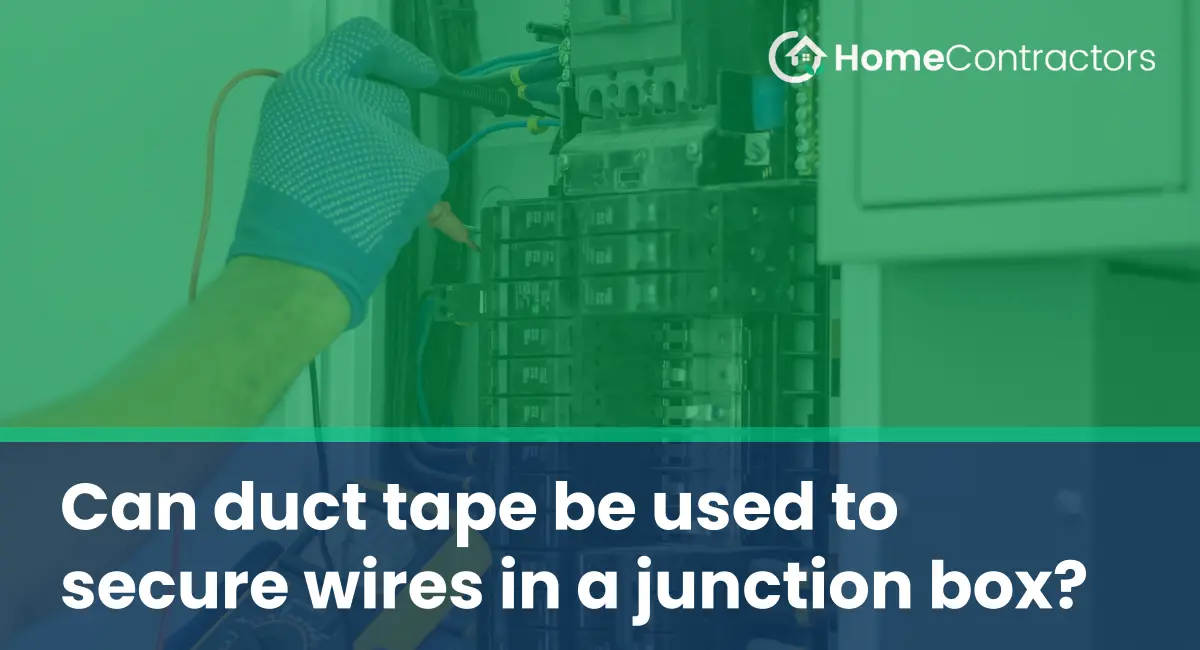When it comes to electrical installations, safety is always a top priority. Junction boxes are essential components of these installations, as they allow for secure connections and protect wiring connections from accidental damage. However, a common question that arises is whether duct tape can be used to secure wires in a junction box. In this article, we will examine this question in detail, discussing the potential risks and safety concerns associated with using duct tape for this purpose.
Understanding Junction Boxes:
Before delving into the question at hand, it is important to understand what a junction box is and why it is necessary. A junction box is a container designed to enclose electrical connections and protect them from external factors such as moisture, dust, or accidental tampering. It also aids in maintaining organized and secure wire connections. This is vital for preventing short circuits, electrical fires, and other hazards that can result from improperly secured wiring.
The Purpose of Securing Wires:
The primary objective of securing wires in a junction box is to prevent any movement or loosening of the connections. Vibrations, tension, or other external factors can potentially cause wires to come loose over time. When wires are not adequately secured, electrical conductivity can be compromised, risking malfunctioning circuits, overheating, or electrical arcing – all of which can lead to hazardous situations.
Potential Risks of Using Duct Tape:
Duct tape is known for its versatility and strength, making it a popular choice for various quick fixes. However, when it comes to securing wires in a junction box, it is not the appropriate solution. There are several reasons why using duct tape for this purpose can pose risks:
- Inadequate Adhesion: Duct tape may not provide a reliable, long-lasting bond, especially in environments with moisture or temperature fluctuations. Over time, the tape can come loose, resulting in insecure connections and potential danger.
- Heat Resistance: Electrical connections generate heat, and sometimes, the junction boxes themselves may become warm. Duct tape is not designed to withstand high temperatures, and as a result, it can melt, lose adhesion, or become a fire hazard if applied near hot components.
- Insufficient Insulation: Securing wires is not the only purpose of using a junction box. Insulation is equally important, as it protects against contact with live wires and minimizes the risk of electrical shocks. Duct tape does not provide sufficient insulation and can potentially expose live wires, leading to dangerous situations.
- Code Compliance: Building codes and electrical safety standards govern the use of materials and techniques in electrical installations. Most jurisdictions have specific regulations for securing wires in junction boxes, and duct tape is generally not an accepted method. Using a non-compliant method may result in failed inspections or other legal consequences.
Alternative Solutions:
To ensure safety and code compliance, it is best to employ appropriate methods for securing wires in a junction box. The following alternatives are commonly recommended:
- Wire Connectors: Wire connectors, also known as wire nuts, are specifically designed to secure and connect electrical wires. They provide a reliable and durable connection, preventing accidental loosening. Ensure that wire connectors are properly sized for the number and gauge of wires being joined.
- Mounting Clips or Clamps: Mounting clips or clamps can be used to secure wires within a junction box, providing stability and preventing any accidental strain on the connections. These clips or clamps are designed for electrical purposes and are a reliable choice.
- Cable Ties or Straps: Cable ties or straps can be utilized to bundle and organize wires within a junction box. While they do not secure the individual connections, they help maintain a tidy and neat arrangement, reducing the risk of accidental tugs or pulls on wires.
Although duct tape is a versatile tool for various applications, it should not be used to secure wires in a junction box. The potential risks, such as inadequate adhesion, insufficient insulation, and lack of code compliance, outweigh any temporary benefits. Instead, appropriate methods such as wire connectors, mounting clips or clamps, and cable ties or straps should be employed to ensure secure and safe electrical connections within a junction box. Prioritizing safety in electrical installations is crucial, and using the correct materials and techniques is an essential step in maintaining a secure and hazard-free electrical system.
